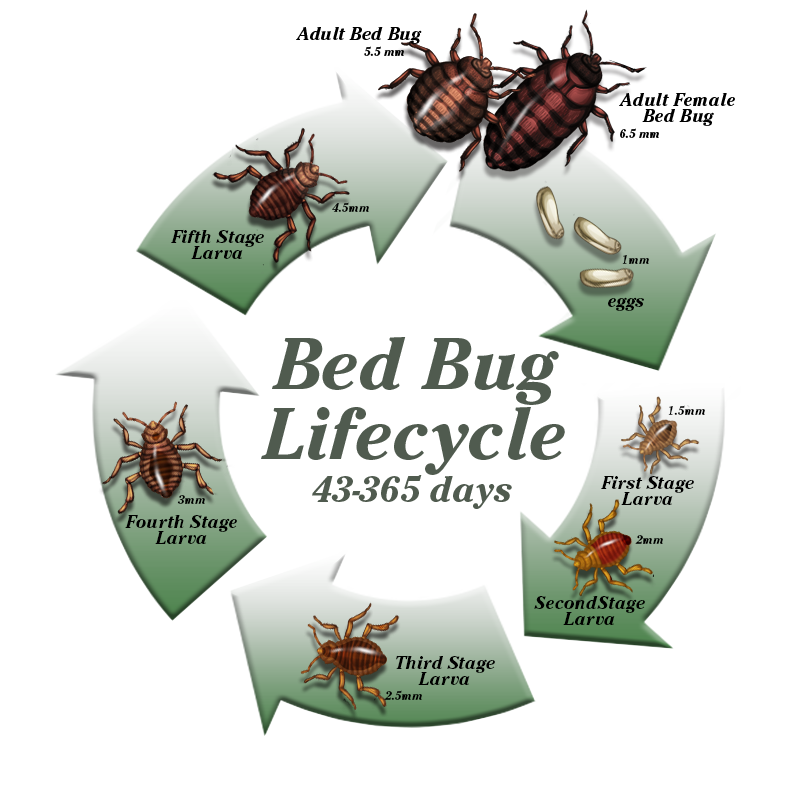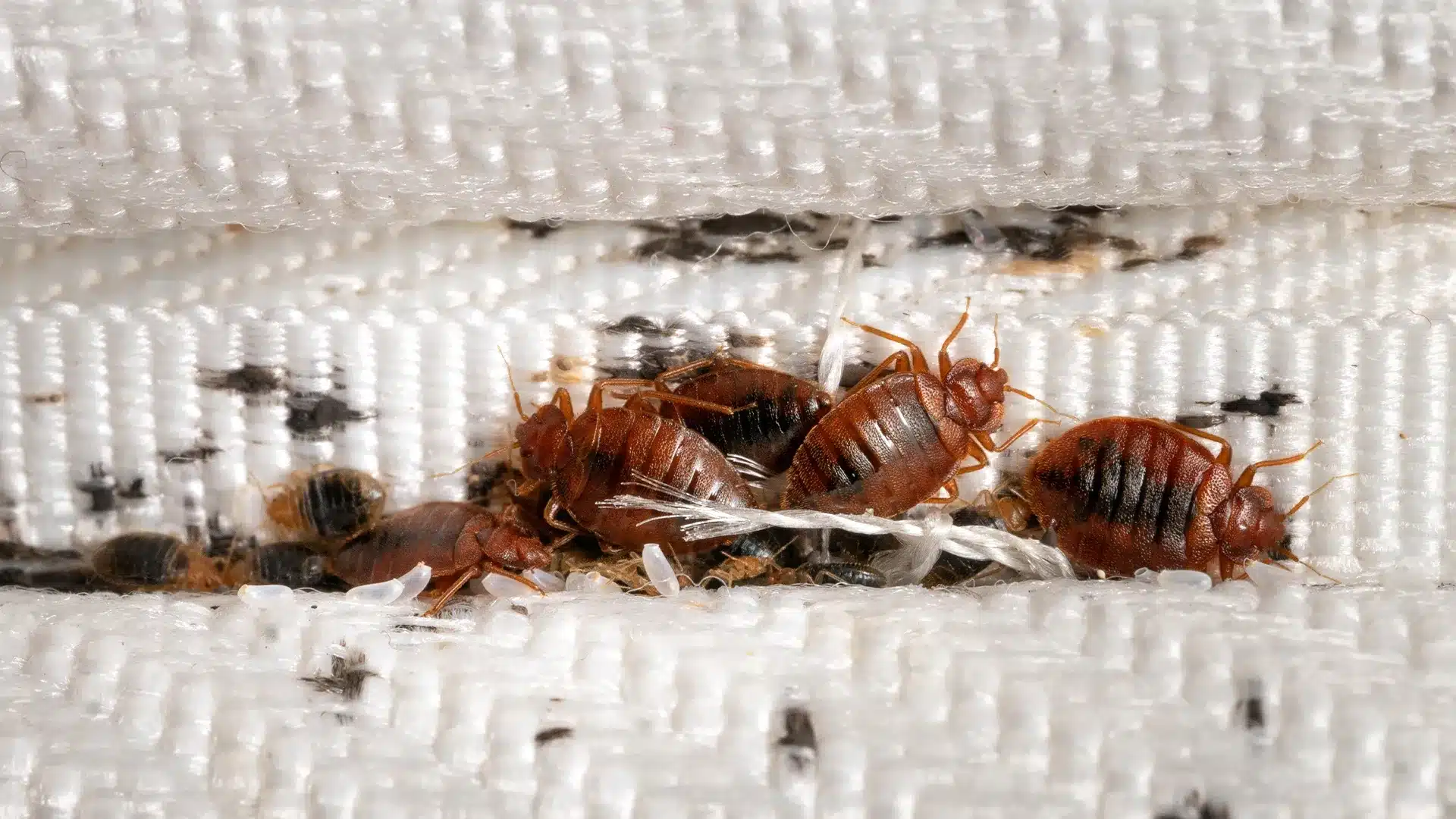Affordable Bed Bug Heat Treatment for Quick and Effective Results
Obtain Enlightened Regarding the Kinds of Insect Control Approaches and Their Benefits for House Owners
Understanding the various pest control methods offered to house owners is necessary for reliable parasite monitoring. Home owners that are knowledgeable can make calculated options that not only address insect problems but also enhance the total quality of their living environment.
Chemical Parasite Control Approaches
Chemical bug control techniques are an important element of integrated parasite administration techniques for property owners seeking reliable options to pest invasions. These techniques involve the application of chemical substances made to remove or hinder bugs that threaten personal effects, health and wellness, and comfort. Usual chemicals made use of consist of insecticides, herbicides, fungicides, and rodenticides, each customized to target particular pests.
The key advantage of chemical parasite control is its rapid efficiency; numerous solutions provide instant outcomes, reducing pest populations dramatically quickly. Furthermore, advances in chemical formulations have brought about products that are much more eco friendly and have lower toxicity degrees for non-target microorganisms when used correctly.

Biological Bug Control Strategies
Natural parasite control methods have actually acquired importance as home owners look for safer and much more sustainable options to typical chemical approaches. Biological pest control techniques use natural predators, bloodsuckers, or microorganisms to handle parasite populaces properly. This method is not only environmentally friendly but also minimizes the danger of damage to non-target species, including useful bugs and wild animals.
Among one of the most usual organic control approaches involves presenting all-natural killers right into the setting. For instance, ladybugs can be used to control aphid populations, while nematodes target soil-dwelling insects like grubs. Additionally, parasitoids-- organisms that live on or within a host-- can be used to control certain bug varieties by laying eggs inside them, ultimately resulting in their death.
Another method is the usage of biopesticides, which are stemmed from all-natural materials such as minerals, plants, or germs (bed bug exterminator). These items can successfully target insects while presenting marginal threat to human beings and animals. Generally, biological bug control techniques give homeowners with an efficient methods of parasite administration that straightens with environmental concepts, promoting a much healthier living setting while minimizing dependence on synthetic chemicals
Mechanical Parasite Control Techniques
Mechanical parasite control strategies include a selection of methods that literally prevent or get rid of pests without making use of chemicals. These strategies are especially advantageous for home owners seeking ecologically pleasant options while making certain the safety of their home.
One typical approach is making use of barriers, such as webs, traps, and displays, which protect against insects from entering homes or certain locations. Installing window screens can efficiently keep bugs out, while utilizing physical obstacles around yards can hinder larger pests like rabbits or deer. Additionally, mechanical catches designed for rodents can capture and get rid of these parasites without the demand for hazardous materials.
An additional reliable approach entails using brooms and vacuums to eliminate pests directly from surfaces. Normal cleansing and upkeep can considerably decrease insect populations by eliminating food resources and concealing spots. Furthermore, using gadgets like ultrasonic insect repellents can discourage various parasites with acoustic wave that are undesirable to them however inaudible to humans.
Cultural Bug Control Practices
Cultural bug control methods concentrate on changing the atmosphere and management strategies to create problems that are much less for pest invasions. These methods are fundamental in keeping a balanced check here community and reducing the dependence on chemical interventions. By changing farming practices, house owners can effectively discourage parasites while promoting plant health and wellness.
One usual approach includes crop turning, which interferes with the life cycles of pests by altering the kinds of plants expanded in a specific area (bed bug exterminator). This not only lessens pest populaces but also enhances dirt wellness. Additionally, intercropping-- planting diverse crops in proximity-- can puzzle parasites and lower their ability to locate their favored host plants
Water administration is one more critical aspect of cultural practices. Proper irrigation methods can avoid standing water, which works as a breeding place for mosquitoes and other pests. Additionally, preserving cleanliness in and around the home, eco friendly pest control such as on a regular basis eliminating particles and food waste, can dramatically lower parasite destination.
Including these social methods into an extensive insect management approach permits homeowners to create an environment that normally hinders bugs, consequently enhancing the effectiveness of other control approaches while advertising sustainable horticulture and landscape design.

Integrated Bug Administration Approaches
Integrated Bug Monitoring (IPM) stands for an all natural strategy that incorporates numerous approaches to effectively manage pest populations while minimizing environmental impact. This approach integrates organic, social, physical, and chemical methods to accomplish lasting bug control. By examining pest populations and their natural adversaries, IPM highlights tracking and identifying pests prior to carrying out control steps.
One of the core concepts of IPM is using thresholds, which develop the level of bug activity that calls for treatment. This makes certain that treatments are used only when necessary, lowering the reliance on chemical pesticides. Organic control techniques, such as presenting natural killers or parasites, operate in conjunction with social practices like plant rotation and environment manipulation to Our site interfere with pest life cycles.
Moreover, IPM encourages using least-toxic chemical options when treatment is necessary, prioritizing items that position marginal risk to non-target organisms and the setting. For property owners, taking on IPM approaches not only improves the efficiency of insect monitoring but also advertises a much healthier living environment, promoting biodiversity and lowering chemical exposure. Eventually, IPM encourages homeowners to make educated choices that stabilize pest control with environmental duty.
Verdict
In conclusion, comprehending the various insect control approaches empowers house owners to make informed decisions relating to pest management. Each method-- chemical, organic, mechanical, cultural, and integrated bug monitoring-- provides unique advantages that provide to different requirements and choices.
Understanding the various bug control approaches available to property owners is necessary for reliable pest administration.Chemical bug control approaches are a crucial element of integrated bug monitoring approaches for homeowners seeking effective services to pest invasions. Generally, organic bug control strategies give home owners with a reliable methods of pest management that aligns with ecological principles, advertising a much healthier living setting while minimizing dependence on artificial chemicals.
Cultural pest control practices focus on modifying the environment and monitoring strategies to develop problems that are less conducive to pest problems.In conclusion, understanding the various insect control methods empowers home owners to make enlightened decisions concerning pest management.